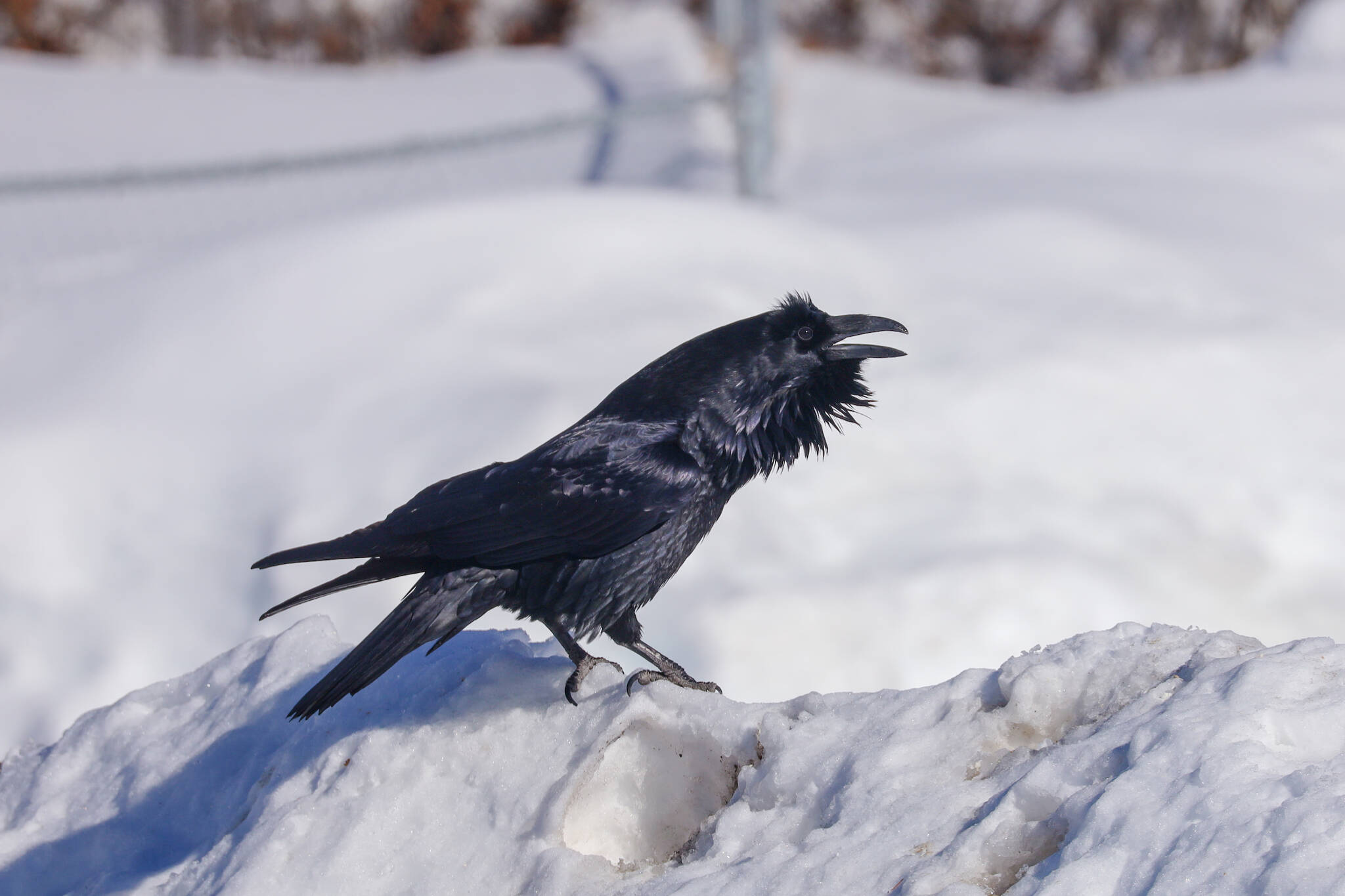Be careful what you say, ravens. Doug Wacker is listening to you.
Wacker studies animal behavior at the University of Washington Bothell. Since August 2022, he has been in Fairbanks, following ravens. When he hears them vocalizing, Wacker points at the big, black birds with a microphone attached to a plastic dish that resembles a giant contact lens.
Wacker is recording as much raven talk as he can in Alaska’s second-largest city. He wants to find meaning, if any, in the squawks, rattles and water-droplet/computer sounds that so often come from those black beaks.
Many of Wacker’s recordings are the voices of members of the greatest local congregation of ravens he has found so far — at the Fairbanks dump.
“I never thought I would go do an academic sabbatical in a landfill,” Wacker said during a recent presentation.
Wacker wonders if there is any pattern in the array of sounds that come from a raven’s mouth. Over the years, researchers have identified up to 116 different vocalizations from ravens.
Though scientists who study ravens have debated that number, William Boarman and Bernd Heinrich described a few types of specific calls in a raven description they wrote for the Cornell Lab of Ornithology’s Birds of North America. The distinct calls were begging, vocal play, predatory alarms, demonstrative calls, knocking, comfort sounds, chase calls and mimicry.
Wacker is now recording the sounds of ravens (and their cohorts bald eagles) at the Fairbanks landfill 24 hours a day. He is also recording at many other places opportunistically.
Wacker wants to further decode raven calls using machine learning, which he describes as using a computer to look for patterns.
He said humans are biased in their descriptions of sounds, noting that scientists have described the same call ravens use to announce they have found food as an aw, a kow, a ky and as a yell.
“We’re all calling the same (sound) something different,” Wacker said.
He looks at raven calls with spectrograms — visual displays with colored peaks and valleys that spill over his computer screen. These allow him to compare the sounds using his eyes as well as his ears. For example, he can measure with precision the length of a raven’s call and the time between syllables.
He hopes that as he uploads snippets of Fairbanks raven chatter, the machine-learning computer will separate raven calls into categories he would not have come up with himself.
For now, Wacker taps his brake and steps outside his car near Wendy’s, where he records ravens talking over the traffic on Airport Way.
With the help of artificial intelligence, he might gather enough raven talk during his sabbatical year to help us humans come up with a better idea of how our Dumpster companions are communicating.
This begs a question: Do we really want to know what ravens are saying about us?
• Since the late 1970s, the University of Alaska Fairbanks’ Geophysical Institute has provided this column free in cooperation with the UAF research community. Ned Rozell, ned.rozell@alaska.edu, is a science writer for the Geophysical Institute.

